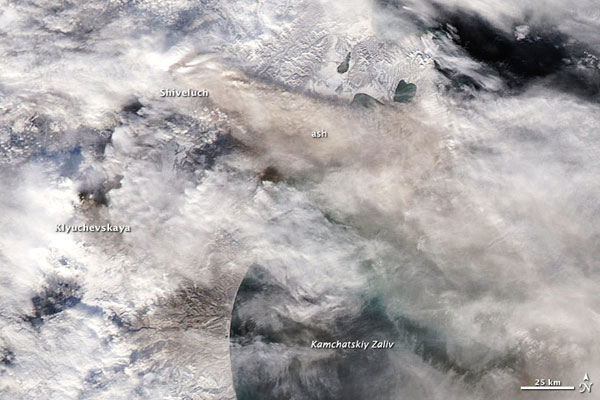
Two Russian Volcanoes Erupt

Russia's Shiveluch Volcano erupted today (Oct. 28), sending an ash plume 25,000 feet (7,600 meters) into the air, which was visible from space.
This natural-color satellite image shows the light brown plume rising from Shiveluch and out over the Kamchatkan coast and Kamchatskiy Zaliv (Gulf of Kamchatka) of Russia.
Beneath the ash and clouds snow covers most of the land. To the south of Shiveluch a smaller, darker plume is visible over Klyuchevskaya, another of the currently active Kamchatkan volcanoes that erupted on Sunday.
Shiveluch is the northernmost active volcano in Kamchatka Krai Russia, home to one of the most active volcanic regions in the world .
Shiveluch began forming during the Holocene (about 60,000 to 70,000 years ago) and it has had at least 60 large eruptions during that time. This era of activity coincides with the peak of activity in other Kamchatka volcanoes .
The most recent period of activity started around 900 B.C. Since then, eruptions have occurred during 50- to 400-year-long intervals. Frequent collapses of dome complexes, most recently in 1964, have produced debris avalanches whose deposits cover much of the floor of Shiveluch's large horseshoe-shaped caldera (the large craters that form at the mouths of many volcanoes).
Kamchatka's volcanoes are a part of the Pacific Ring of Fire , irregularly spaced chains of volcanoes that encircle the Pacific Ocean. Over the last 6 million years the area has experienced more explosive eruptions than any other region on Earth.
Sign up for the Live Science daily newsletter now
Get the world’s most fascinating discoveries delivered straight to your inbox.










